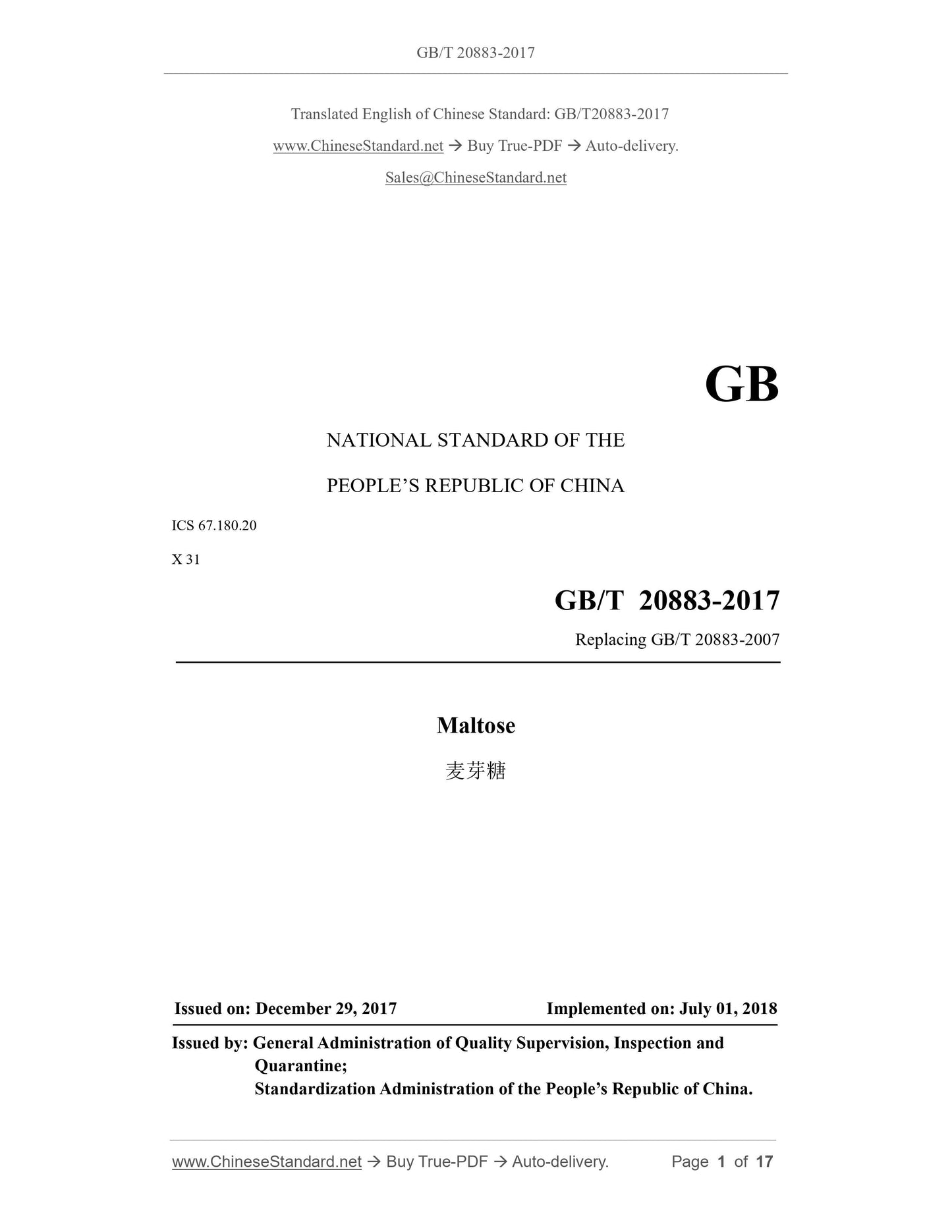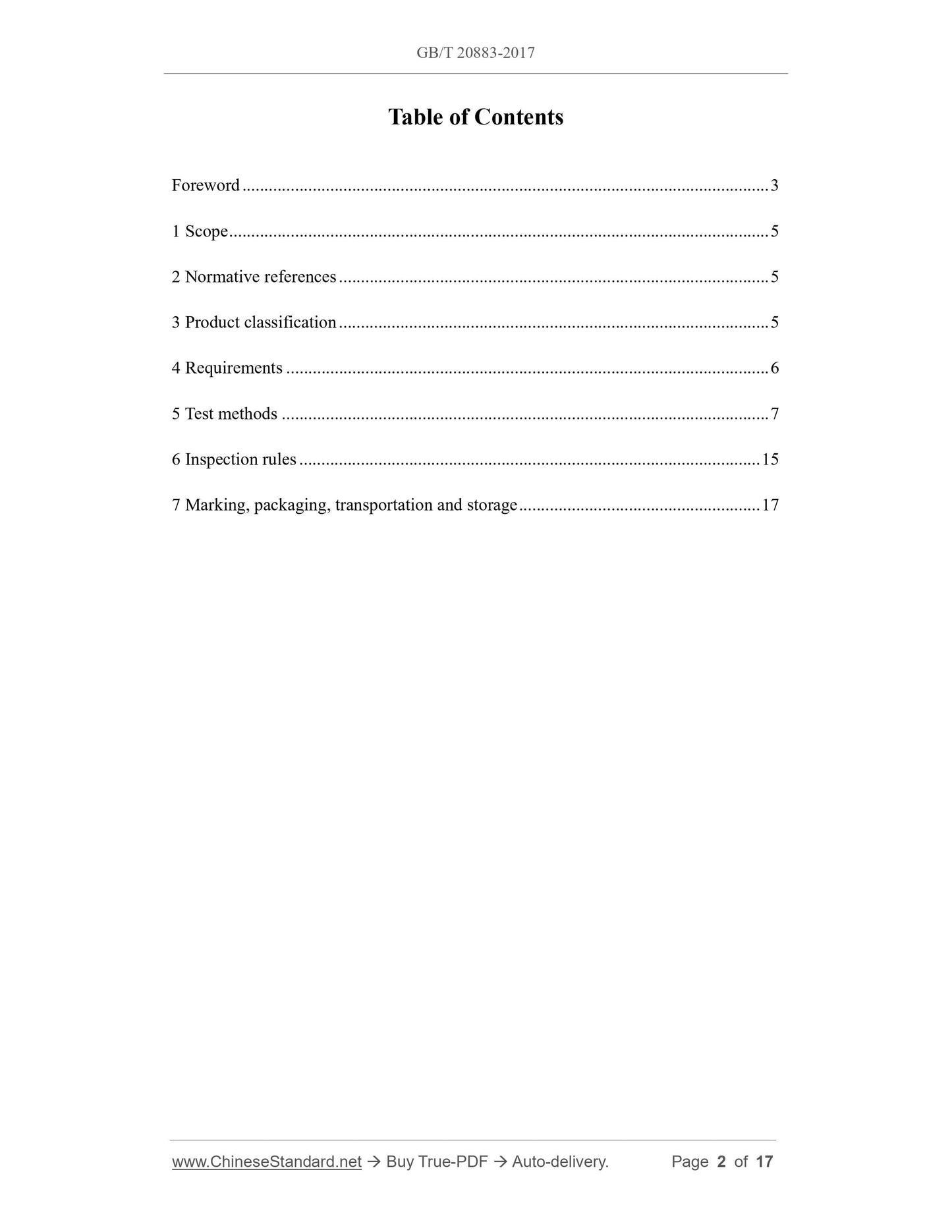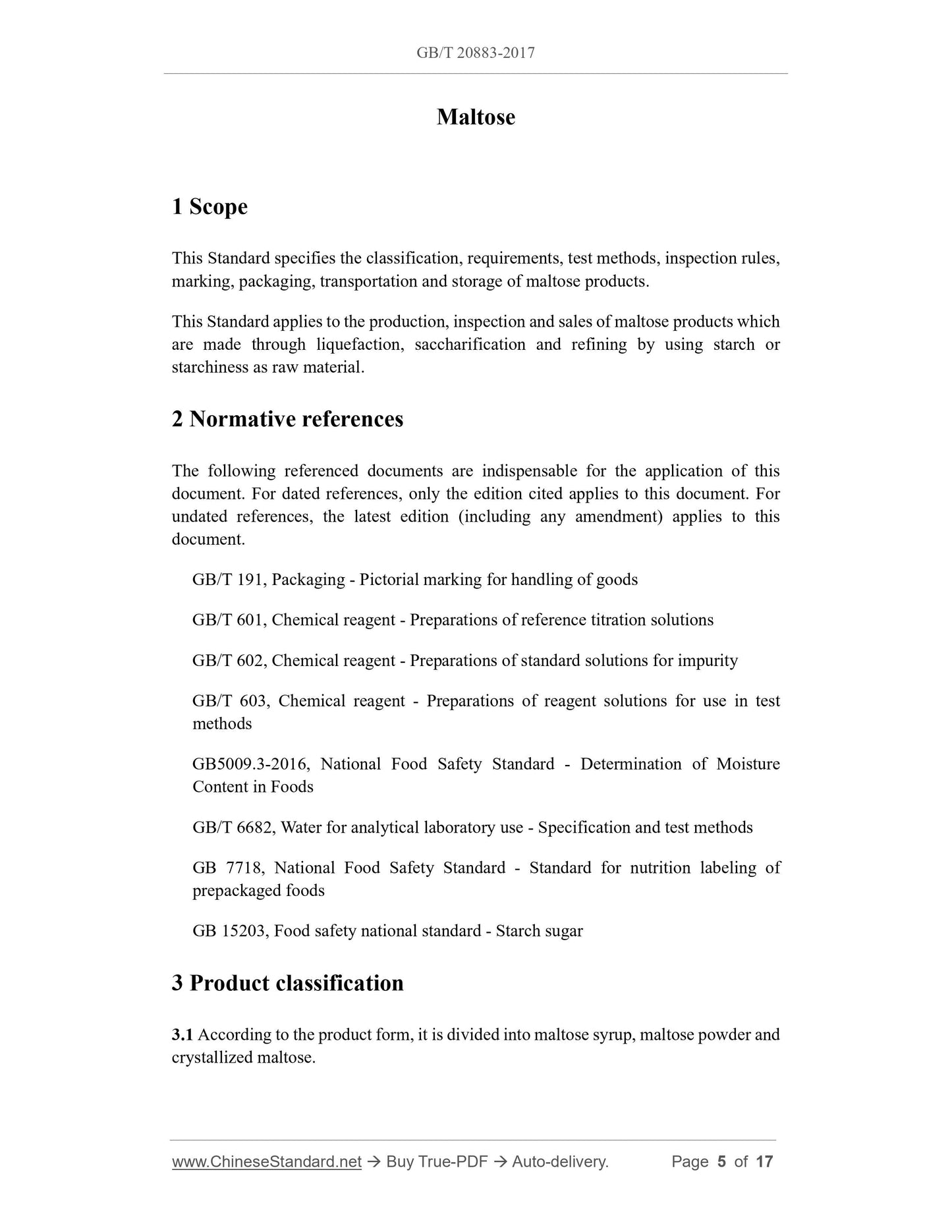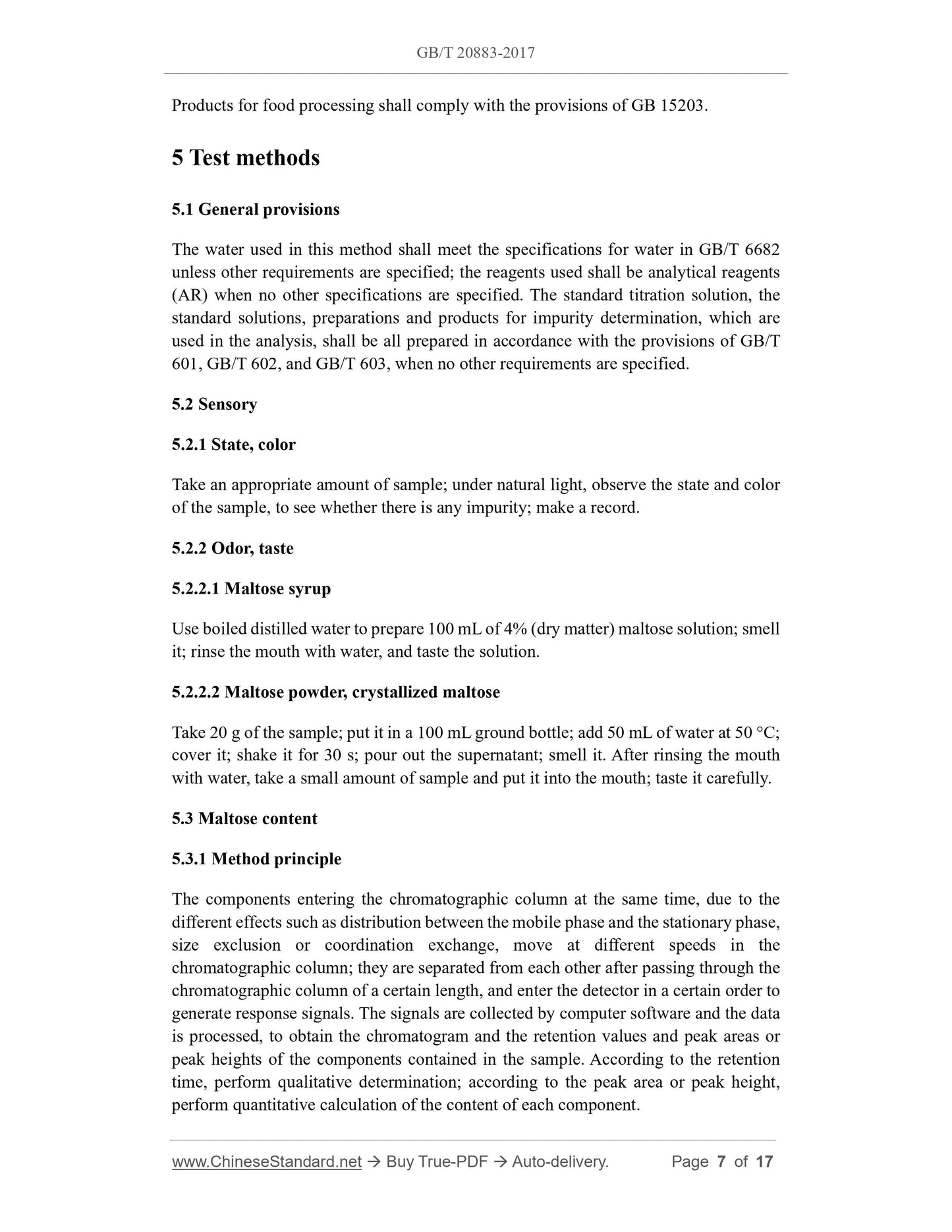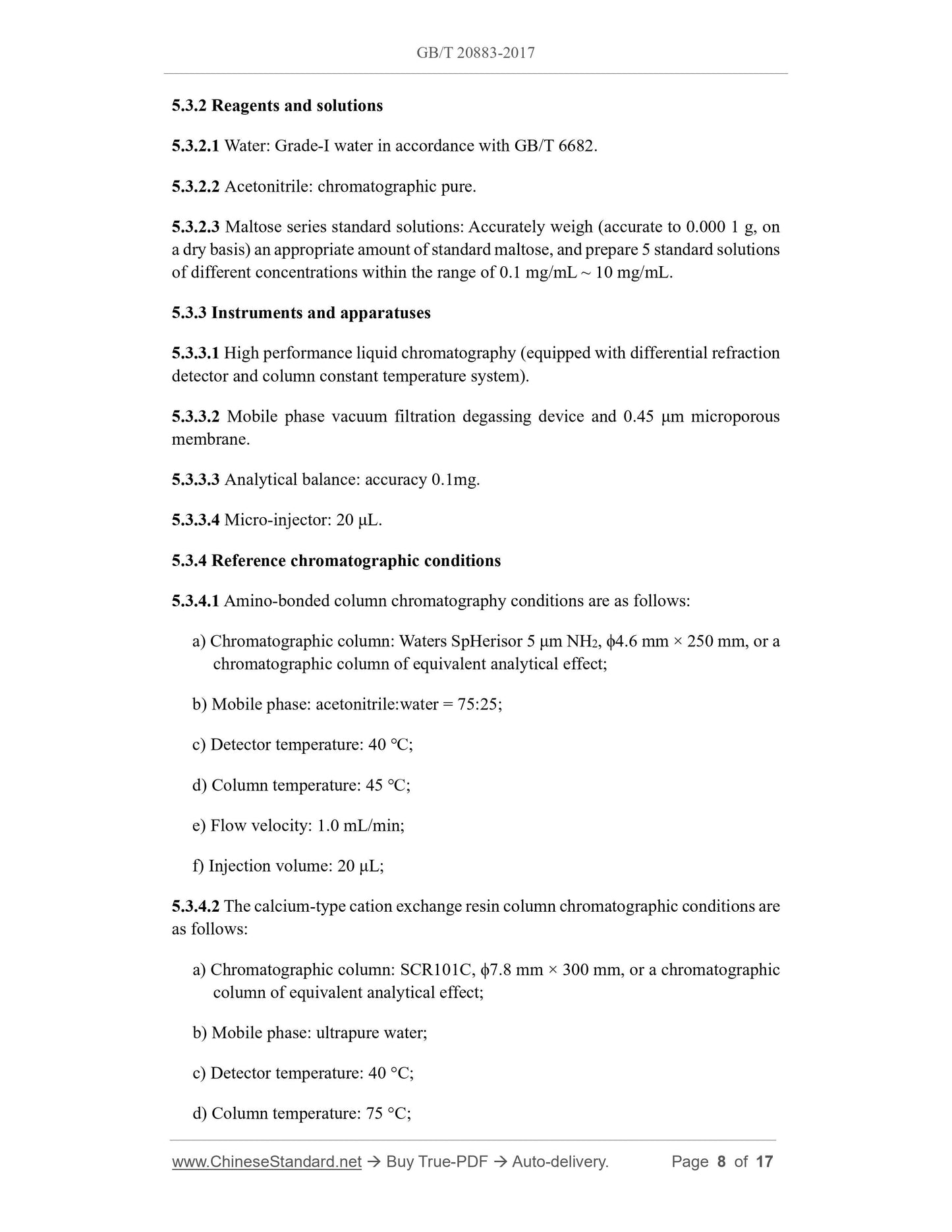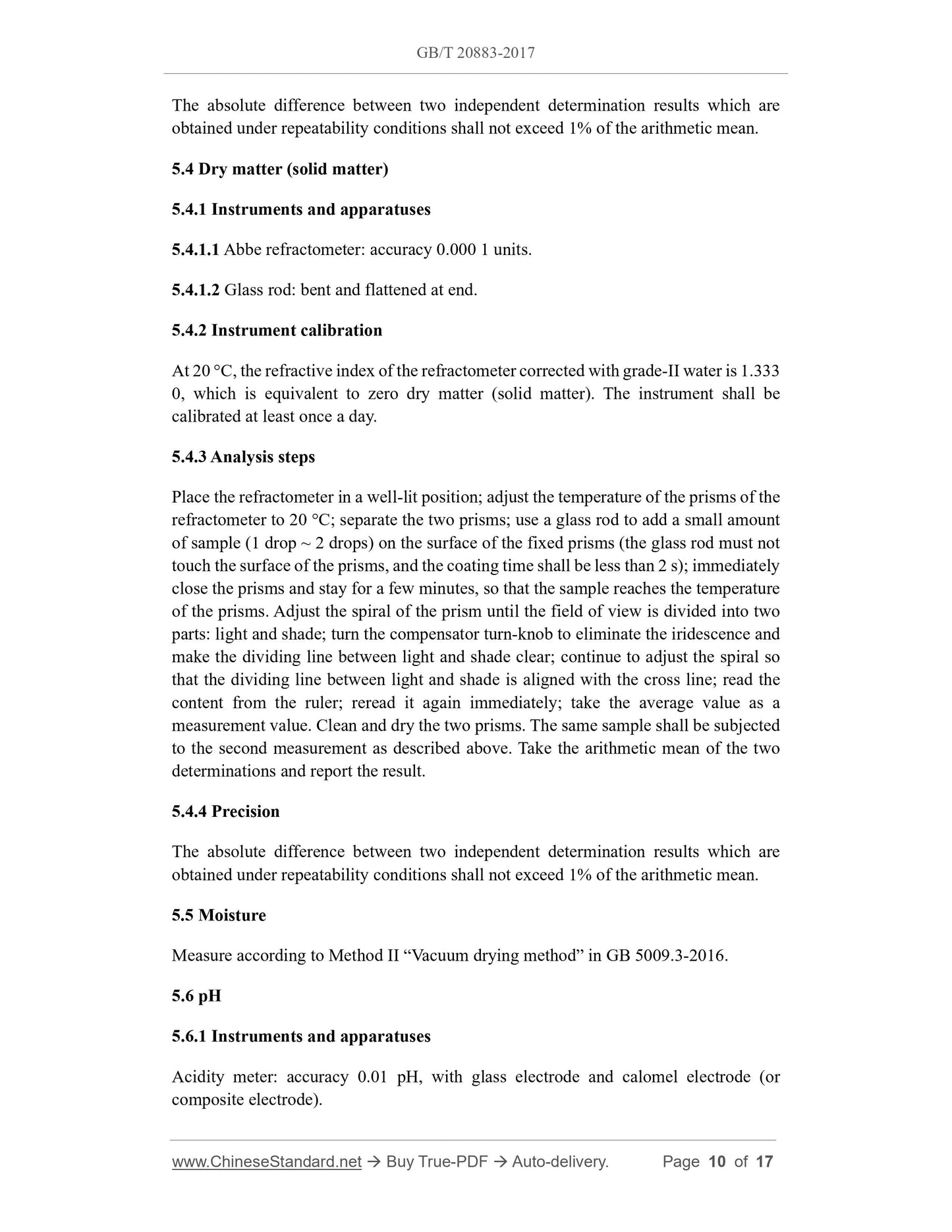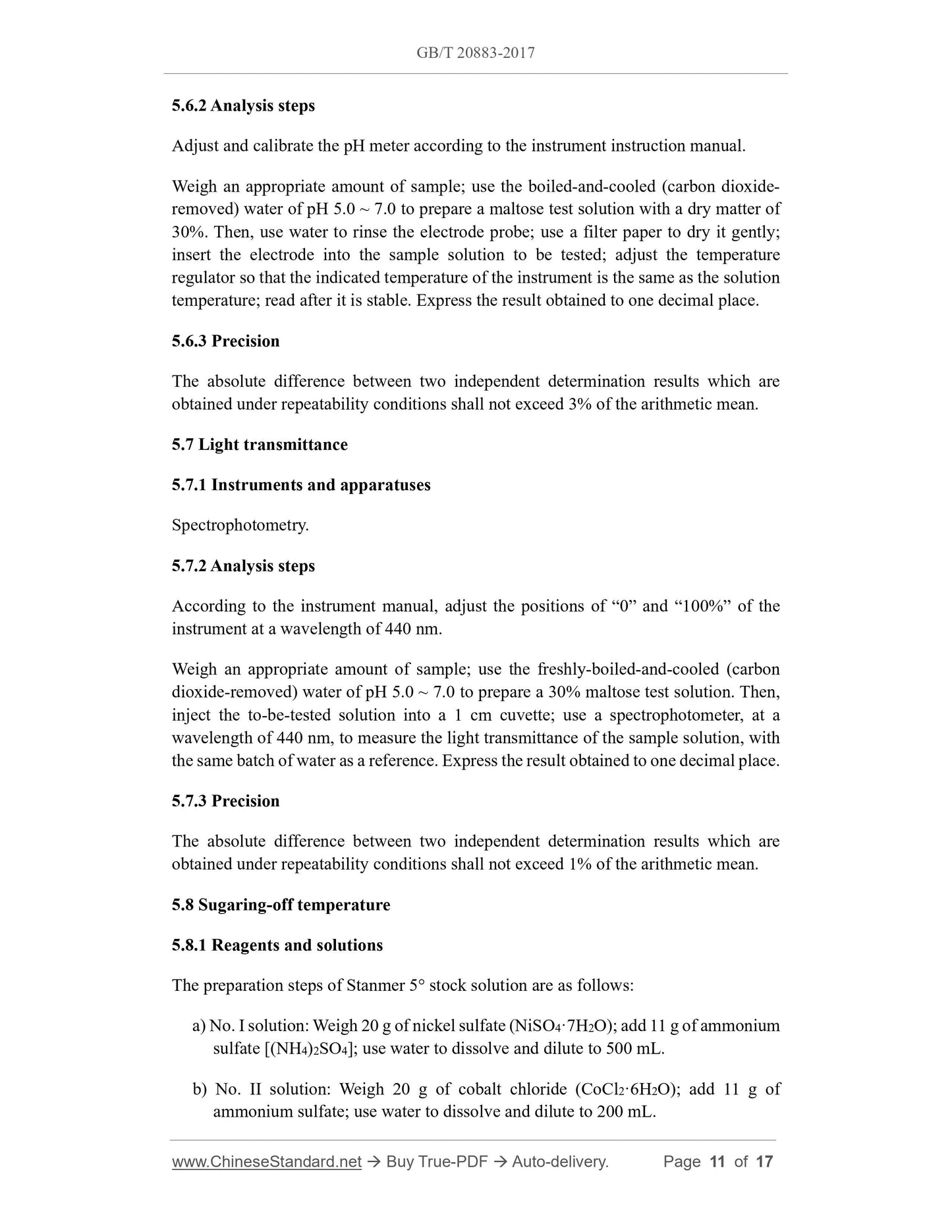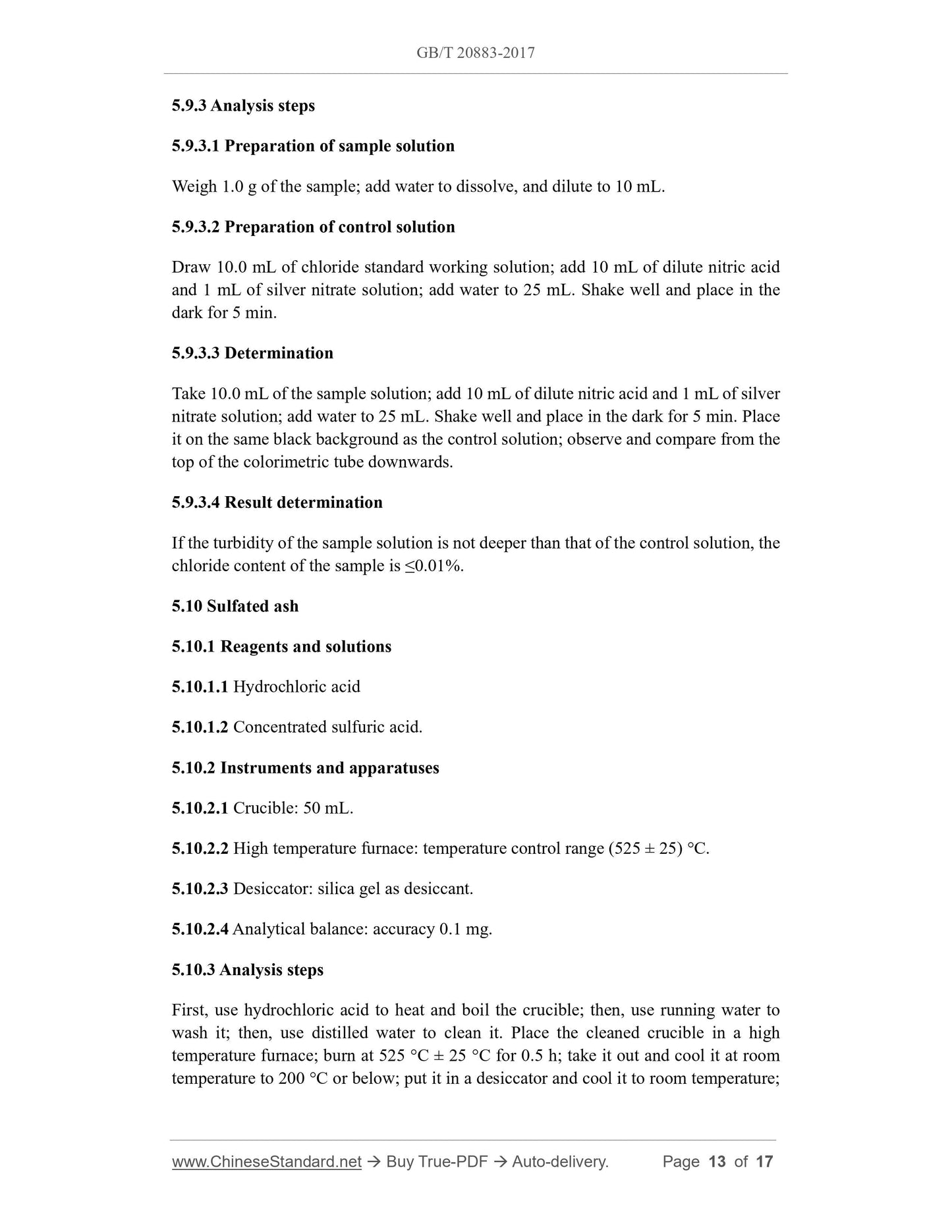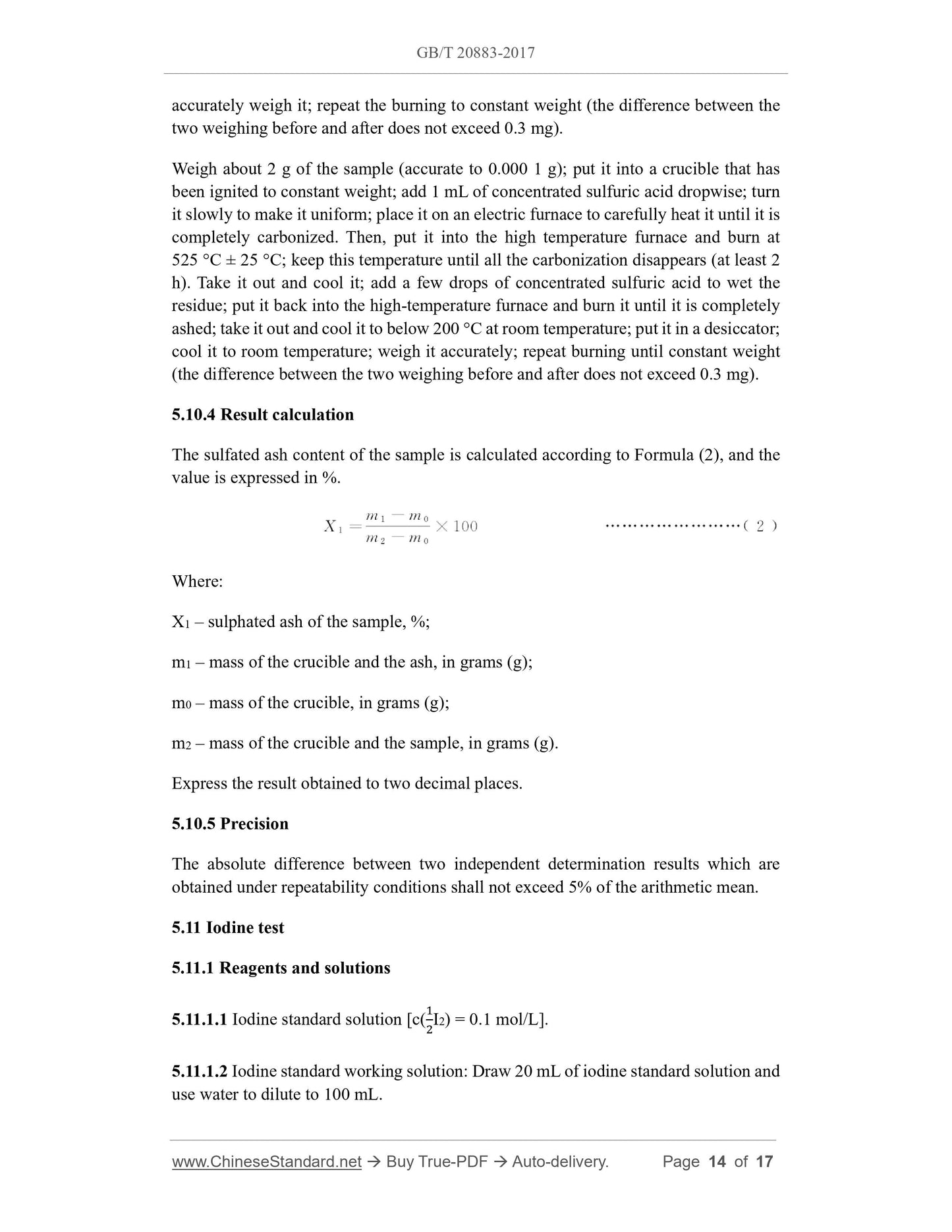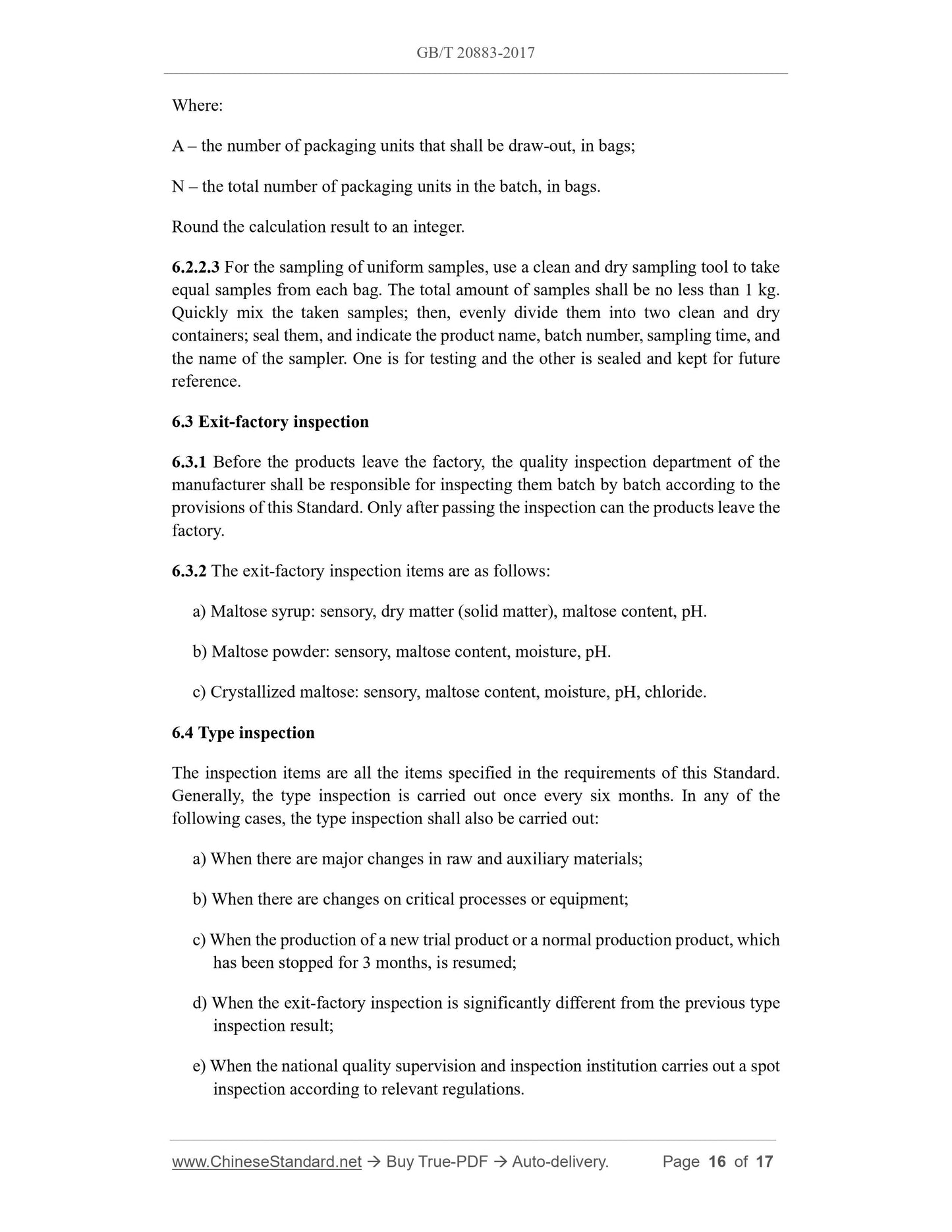1
/
of
10
www.ChineseStandard.us -- Field Test Asia Pte. Ltd.
GB/T 20883-2017 English PDF (GB/T20883-2017)
GB/T 20883-2017 English PDF (GB/T20883-2017)
Regular price
$230.00
Regular price
Sale price
$230.00
Unit price
/
per
Shipping calculated at checkout.
Couldn't load pickup availability
GB/T 20883-2017: Maltose
Delivery: 9 seconds. Download (and Email) true-PDF + Invoice.Get Quotation: Click GB/T 20883-2017 (Self-service in 1-minute)
Newer / historical versions: GB/T 20883-2017
Preview True-PDF
Scope
This Standard specifies the classification, requirements, test methods, inspection rules,marking, packaging, transportation and storage of maltose products.
This Standard applies to the production, inspection and sales of maltose products which
are made through liquefaction, saccharification and refining by using starch or
starchiness as raw material.
Basic Data
| Standard ID | GB/T 20883-2017 (GB/T20883-2017) |
| Description (Translated English) | Maltose |
| Sector / Industry | National Standard (Recommended) |
| Classification of Chinese Standard | X31 |
| Classification of International Standard | 67.180.20 |
| Word Count Estimation | 14,119 |
| Date of Issue | 2017-12-29 |
| Date of Implementation | 2018-07-01 |
| Older Standard (superseded by this standard) | GB/T 20883-2007 |
| Regulation (derived from) | National Standards Bulletin 2017 No. 32 |
| Issuing agency(ies) | General Administration of Quality Supervision, Inspection and Quarantine of the People's Republic of China, Standardization Administration of the People's Republic of China |
Share
